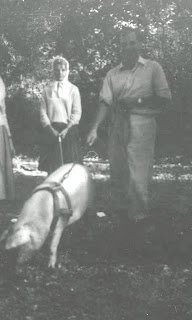
As the truffle season has come to a close, I find myself pining and becoming more and more obsessed with this particular fungus….
Known as the Black Diamond, the Melanosporum, or black truffle, is a tuber which has been equally feared and revered in its long history. In the middle ages it was considered the food of the devil, being both black and subterranean (even the white ones, Tuber Magnatum, look pretty dark when first exhumed).
Part of the mystique comes from their defiance in the face of attempts at cultivation, their stubbornly short season and of course their ethereal, almost intangible, yet intense flavour.
In modern days they are prized by gourmets and can fetch prices well into the thousands of pounds for a kilo. The big money they attract and the rarity of finding a good haul leads to all sorts of underhand behaviour, with truffle hunters tresspassing, following one another in the dark, cloak and dagger stuff. They usually go hunting around dawn so they don’t have to carry torches which would make them more conspicuous. No-one in France or Italy will tell you where they get the good ones – there are often offers of walks at dawn with a man and his dog, but of course they won’t show you the secret places…
Lacking a canine, and the cats not being too biddable, I took my visiting parents recently to the Domaine de Bramarel (www.ayme-truffe.com, they do mail order!), a sort of ‘truffle farm’ near the village of Richerenche, in Provence. The roots of trees, mostly oaks and beeches (there is a variety of oak known as the truffle oak which grows on sandy banks and hillsides and is altogether lankier than its stout English village green cousin) are sprayed with spores of the truffle before they are planted out, in the hope that they will encourage the underground gems to show up.

Well trained dogs are then taken truffling when the season comes and the truffles are dug up carefully by hand. A cry of “cherche la truffe!” will send the dogs into a sniffing craze. The smell that the truffle exudes is only detectable when they are ripe and ready to eat, or else when something burrows into them, thus releasing the inner odour.

It is altogether a safer bet for the forager, but the cheating farm isn’t nearly as much fun I think as when my parents went truffling themselves in the late 50s – tins of truffles were purchased at huge expense from Fortnum & Mason; a large pig was hired from a farmer and coaxed into a jeep, a decent shovel procured, headscarves donned; a picnic was prepared and the friends set off into the Savernake Forest, where summer truffles have been recorded since at least the 18th century.
Tins were opened and truffles buried for some basic porcine training – which of course resulted in the creature’s snaffling all the Fortnum’s truffles for himself. Sniffing and digging resulted in no tuber action (at least none that the humans got hold of), truffle-free picnic was consumed and piggy taken back to the farm.

I did see an advert for training for Chiens truffiers, or truffle dogs – using the same methods as police dogs – and I thought that could be a way forward - don’t you think it’s time Mascha started earning her keep?
No comments:
Post a Comment